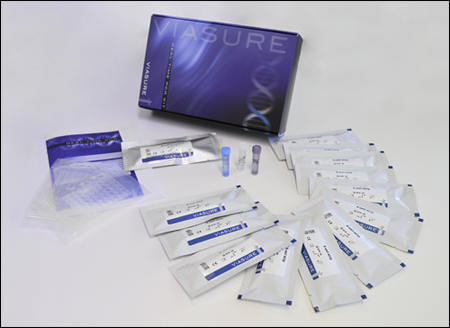
VIASURE Real Time PCR Detection Kits
Borrelia, Anaplasma & Coxiella

Description
VIASURE Borrelia, Anaplasma & Coxiella Real Time PCR Detection Kit is designed for the specific identification and differentiation of Borrelia burgdorferi sensu lato (s.l.), Borrelia miyamotoi and/or Borrelia hermsii, Anaplasma phagocitophylum and/or Coxiella burnetii in clinical samples from patients with signs and symptoms of Tick Borne diseases.
This test is intended for use as an aid in the diagnosis of B. burgdorferi sensu lato (s.l.), B. miyamotoi and/or B. hermsii, Anaplasma phagocitophylum and/or Coxiella burnetii in combination with clinical and epidemiological risk factors.
DNA is extracted from clinical specimens, multiplied using Real Time amplification and detected using fluorescent reporter dye probes specific Borrelia burgdorferi s.l., Borrelia miyamotoi and Borrelia hermsii, Anaplasma phagocitophylum and Coxiella burnetii.
Specifications
Information
Tick Borne diseases comprise a group of infections transmitted to humans by the bite of ticks infected with bacteria, viruses, or parasites. Tick Borne diseases affecting humans include: Lyme disease, relapsing fever, babesiosis, anaplasmosis, ehrlichiosis, Q fever, Tick Borne encephalitis and spotted fever among others.
Lyme disease (or Lyme borreliosis) is the most common Tick Borne disease worldwide. It is caused by the spirochaete Borrelia burgdorferi and it is transmitted to humans through the bite of infected blacklegged ticks of the genus Ixodes. Typical symptoms of Lyme disease include fever, headache, fatigue and a characteristic skin rash called erythema migrans. If left untreated, infection can spread to joints, the heart, and the nervous system.
Borrelia miyamotoi and B. hermsii are species of spiral-shaped bacteria that is closely related to the bacteria that cause tick-borne relapsing fever (TBRF). First identified in 1995 in ticks from Japan, B. miyamotoi has also been detected in different Ixodes ticks species, whereas spirochete Borrelia hermsii is transmitted by its argasid tick vector, Ornithodoros hermsi. Patients with this infection were most likely to have fever, chills, and headache. Other common symptoms included body and joint pain and fatigue.
Anaplasmosis is caused by the bacterium Anaplasma phagocytophilium, and is transmitted to humans through ticks of the genus Ixodes. Anaplasmosis shows high clinical variability, with symptoms like headache, fever, chills, malaise, muscle pain, nausea, cough, confusion and rash. If not treated correctly, anaplasmosis can evolve to severe clinical manifestations and even death in <1% of cases.
Q fever is a zoonosis caused by the bacteria Coxiella burnetii. Cattle, sheep, and goats are the primary reservoirs of Coxiella burnetii, and transmission to humans occurs primarily through inhalation of aerosols from contaminated soil or animal waste, though it can be transmitted through tick bites. Only about 50% of the infected people show clinical symptoms, which are flu-like symptoms such as headache, fever, chills, fatigue, muscle aches, nausea, cough, chest pain and weight loss. In severe cases people may develop pneumonia or hepatitis.
Since most Tick Borne diseases show similar symptoms, diagnosis can be problematic. Real-time PCR assays have been shown to be a sensitive and specific diagnostic tool for the detection of the causative agent.
